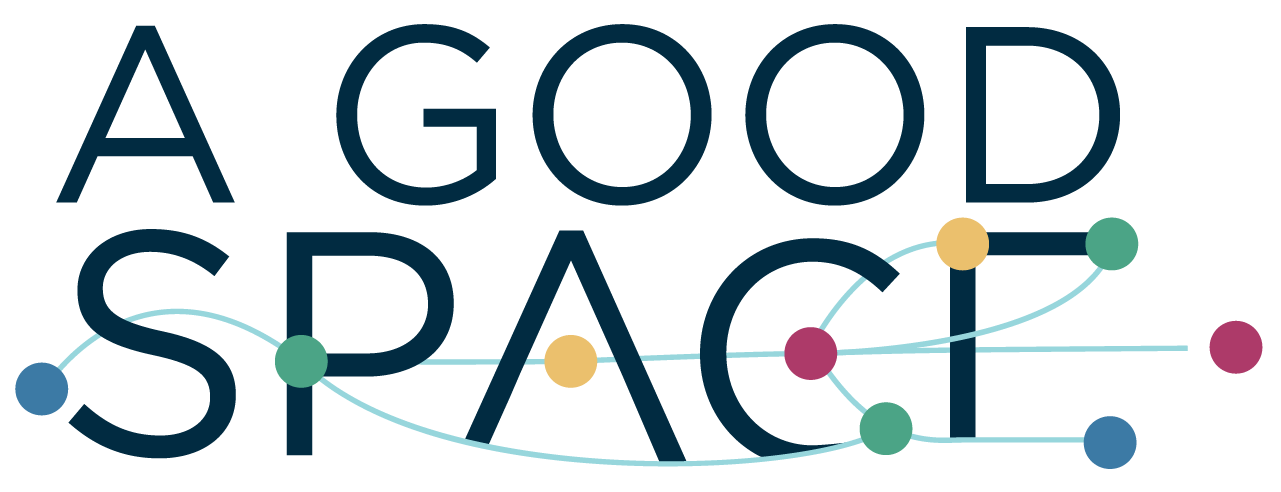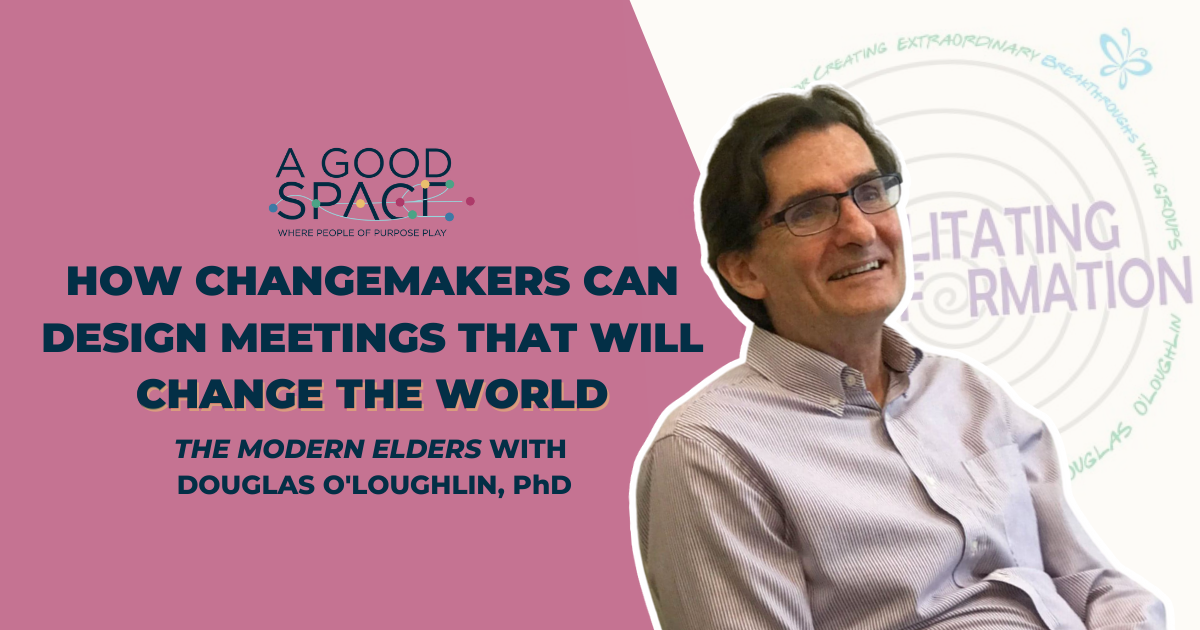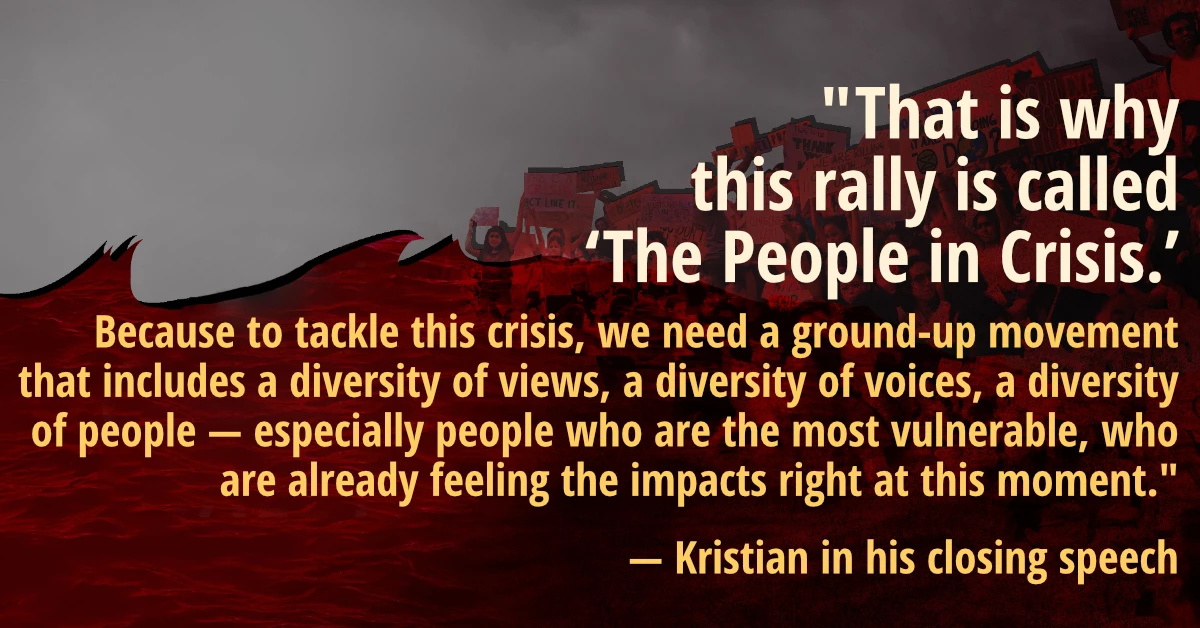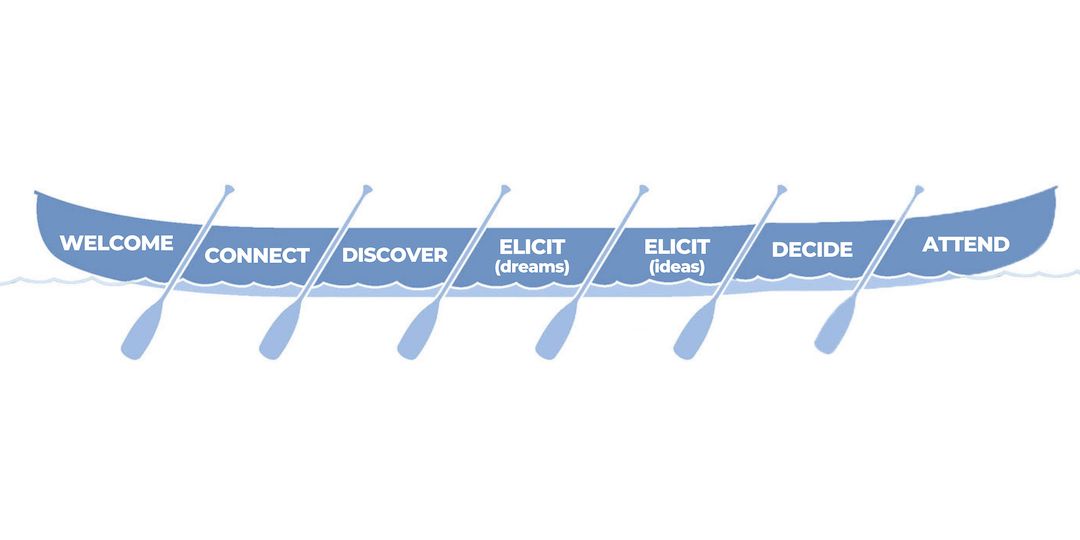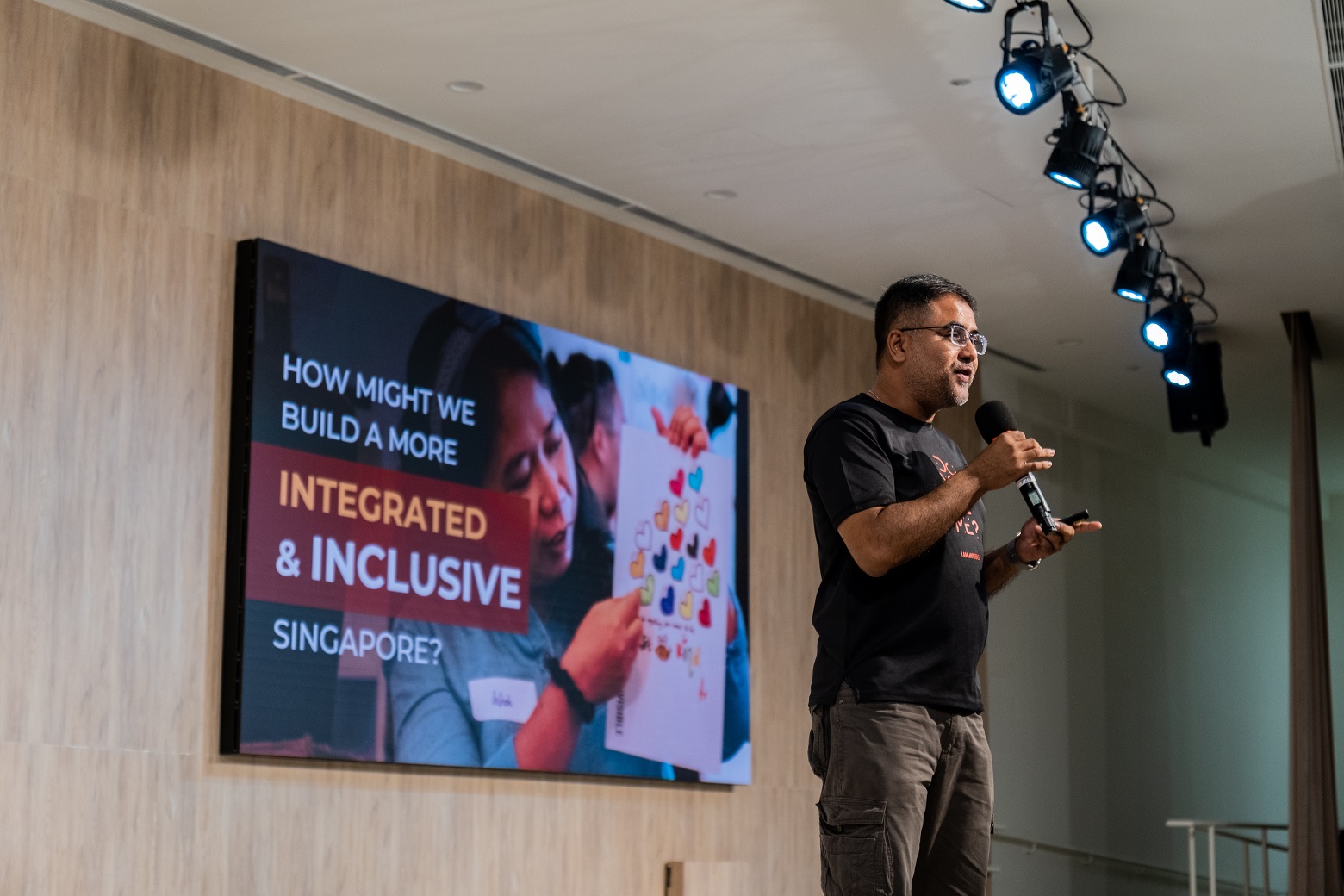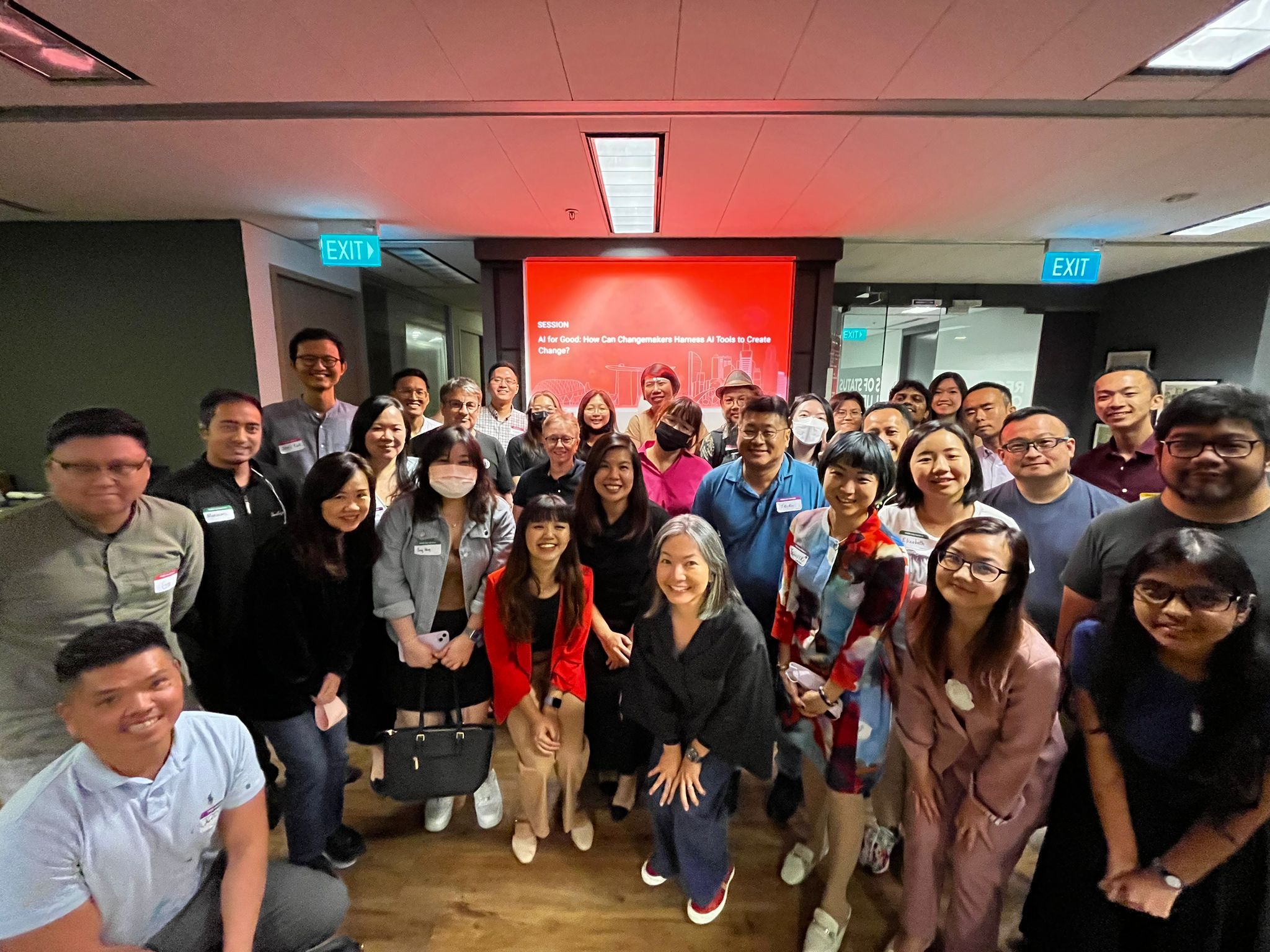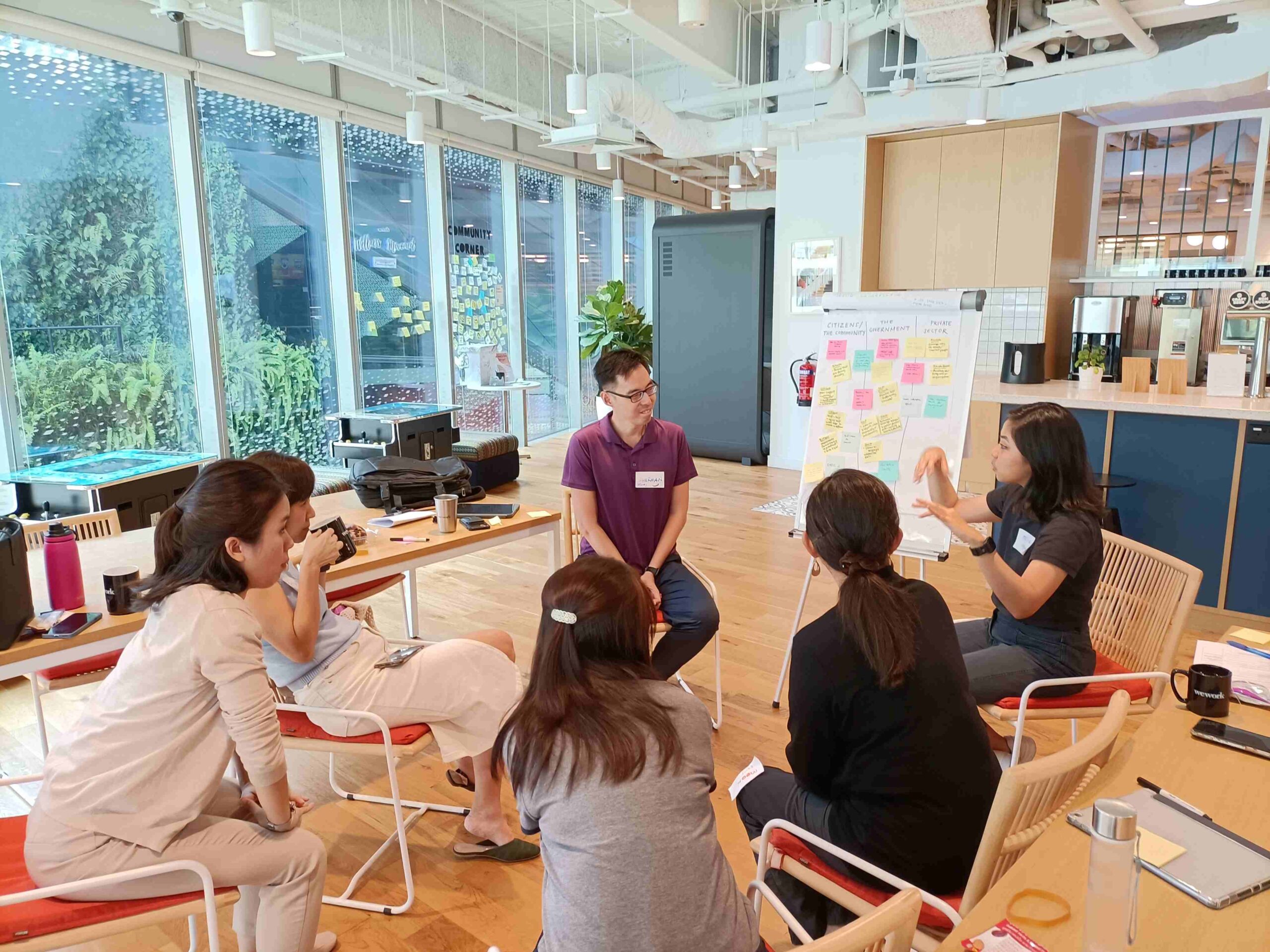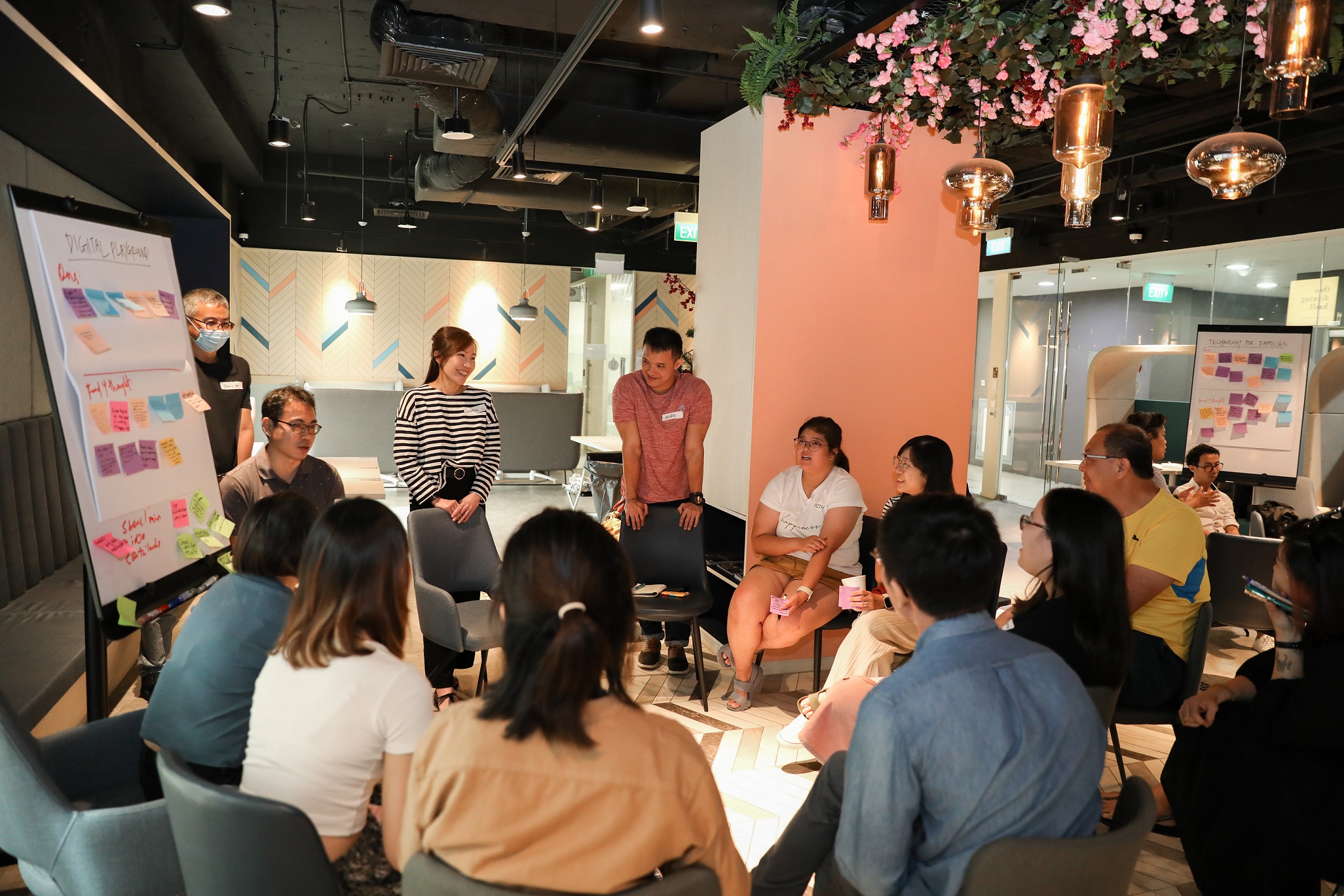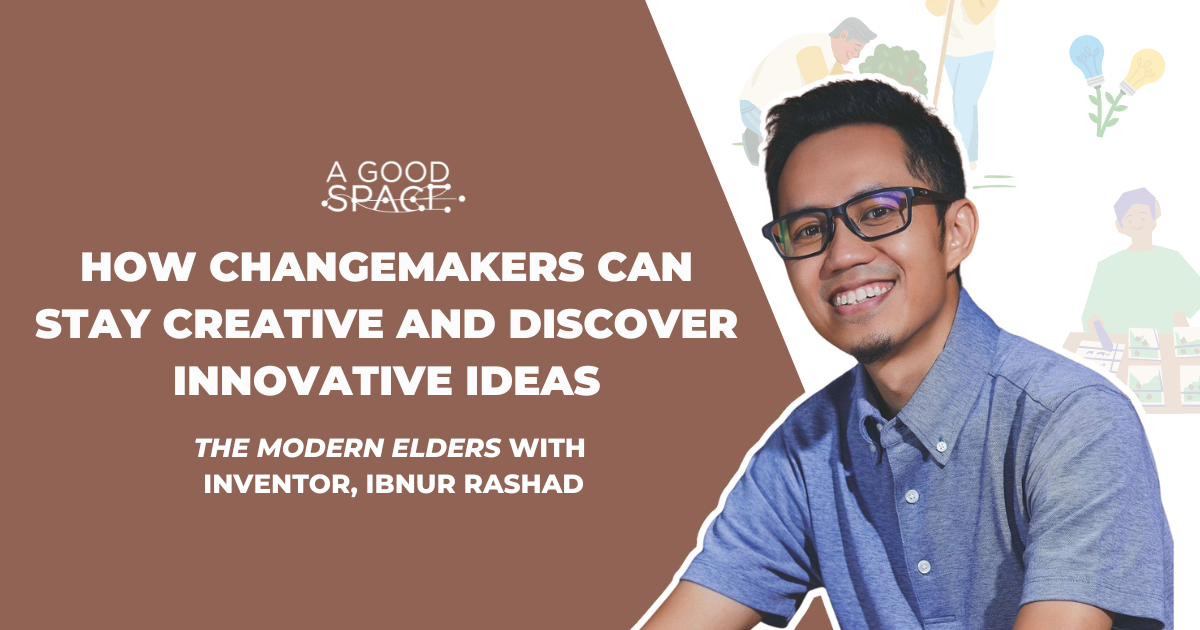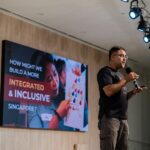I stand by this statement.
I truly believe that diversity leads to more enriching discussions and ultimately, solutions that are more innovative, inclusive and effective. Furthermore, with the social issues becoming more complex, no single person or organisation can solve them alone. Everyone has a piece of the puzzle.
But diversity sometimes leads to challenges too.
After all, we’ve all been in situations where we’ve had to work in teams of people different from us. And it’s common for feelings of frustration and anger to arise, especially when there is a diversity of views and opinions.
So then the question becomes: how do we bring diverse voices together and help them meet in a constructive way that leads to new ideas and possibilities?
Similar to how a conductor keeps hundreds of musicians and instruments on beat and in harmony, playing a beautiful tune, perhaps one place to start is the person or people who guide and facilitate these meetings.
I thought this was the perfect opportunity to sit down with A Good Space member, Douglas O’Loughlin, to ask him for insights on how to design and facilitate meetings that help diverse people do their best thinking and change their world.
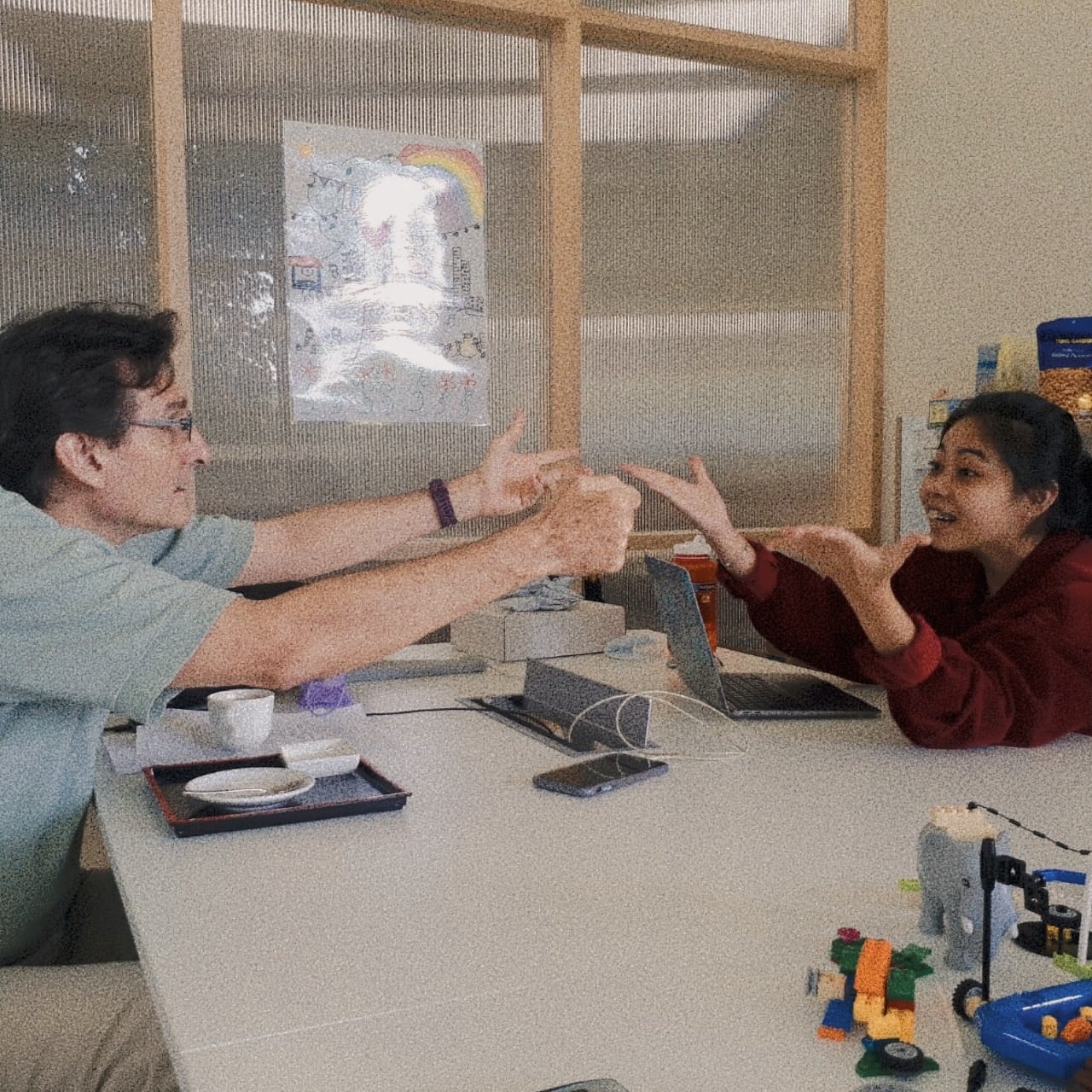
Since arriving in Singapore by accident almost 30 years ago, Doug has made his home here. He has facilitated countless workshops for leaders in companies, civil communities and the government that create shifts in society. Going beyond our shores, he has also facilitated workshops in more than 20 countries and has even published a book called Facilitating Transformation!
In this article, I hope to distil the rich insights unearthed during our conversation; from the value facilitation brings to changemaking, to designing your own session to our more philosophical discussion about what makes a good facilitator.
What is a facilitator?
Doug explains that a facilitator supports individuals or groups to make progress towards goals that are important to them. This could be an organisation charting its vision for the year ahead, or a group of diverse changemakers wanting to create more avenues for members of low-income communities to receive informal assistance to meet their urgent needs.
Facilitators do this by creating a process that helps a group of people to uncover what they care about, feel safe about sharing their perspectives and listen to the perspectives of other members in the group, rather than talking over each other.
Once the group is aware of where they are similar and where they are different, the facilitator helps the group to integrate these different perspectives and how to move forward to create the future they want.
Why should changemakers care about facilitation?
Doug said that changemaking work largely falls under two broad categories – action and advocacy. That is, you either create change by taking individual and/or collective action in support of your cause, or you do what you can to influence decisions within political, economic, and social institutions.
Perhaps changemakers have done these a little too well, especially since a common perception of (young) activists seems to be that they argue for their cause by talking at people, not with them.
However, Doug contends that creating large-scale impact requires more than role-modelling behaviours or having an impressive media campaign.
As social issues become more and more complex, it is imperative that we tackle them in a way that is equally nuanced and compassionate. Especially in his work to bring systems thinking into Singapore’s public service sector, Doug says that ultimately, what systemic change requires is a deeper understanding of different perspectives.
This involves having a sense of curiosity — a desire to reach this understanding. Getting behind what matters to different stakeholders and what they care about is the key to finding common ground.
Many times, he has come across stakeholders who are reticent to engaging with those with a different view, but when they come together it is always enriching.
Possessing and honing one’s facilitation skills would not only help to rally people behind a cause, but also allow for the co-creation of relational and humane organisational solutions that last.
Design your own workshop!
So how exactly can we facilitate meetings for diverse changemakers to come together and create change?
Well, before we talk about facilitation skills, we need to make sure the sessions are designed well. Doug introduced us to the Meeting Canoe, a 7-step structure he uses to design meetings that are smooth and generative.
The brilliant thing about this framework is that while the structure is fixed, the processes and exercises you do at every step is customisable to the group you’re working with!
Before jumping into the specifics, it’s important to first be clear about the intention of your meeting. Doug suggested reflecting on the following questions:
- What is the Compelling Purpose for the meeting? Why would people want to attend?
- Who do we invite? Are there some people or groups whose presence is important to the success of the meeting?
- Is this a 1-off event or will there be multiple sessions?
To focus on the experience of a meeting, be clear on what you would like people to experience and do, in addition to the outcomes you hope to see.
What do you want participants to say to each other at the end of the session, how do you want them to feel? Exploring these questions will give you clarity about how to design the process and things like how to phrase the invitation.
1. Welcome
At the event itself, it is important to greet people. Be intentional about things like who opens the session – this stage is called ‘welcome’, after all. Establishing a welcoming environment from the beginning is important because productive meetings are rooted in safety.
Having music and light refreshments (if it’s an in-person event) are other great ways to set the tone for the rest of the session.
Doug shares that this is also a good opportunity to get a sense of what the system needs. Get to know the participants who are present and find out what they hope to get out of the session so that you can make the session worthwhile for everyone.
2. Connect
Doug is not a fan of ice-breakers.
While he agrees that this stage is meant to get people comfortable with each other, he finds that if the ice-breaker activity is not related to the issue at hand or what needs to be done, it can come across as frivolous.
Instead, a good Connection activity would not only get them connected to each other but also to the topic of the meeting.
A good example is when there is an event where you know everyone has chosen to be there (as opposed to being arrowed). Invite each person to share why it was important for them to make time to be at the session. People share themselves and talk about the issue of the session, and the session is off to a great start.
He shared another example where he used the MBTI profile to get people connected. Break the group into each personality category and pose the question: “What will you do to make this session more effective?”
This exercise will likely reveal key differences in how people show up and understand how to harness the diversity of the personality differences in the room, which results in a fruitful meeting for everyone. While it was a fun way to connect, it was also meaningful as it was also a way to make the meeting more effective.
Through this example, we see how connection exercises can be fun while simultaneously focusing attention on the meeting’s message and purpose.
3. Discover
The aim of this stage is to get the group to reach a common understanding of their current reality – the good and the bad.
This stage gets a bad rep for being a complaint session, which is why leaders tend to avoid it. But issues don’t magically disappear just because we don’t talk about them!
If people don’t get a chance to talk about how they’re feeling about the current reality, negative emotions tend to fester which creates more cynicism among the group. Doing this phase well helps everyone see that this session is a chance to be authentic, and for people to hear perspectives they may not be aware of.
So use this part of the session to get them to talk about real issues. Here are some guiding questions to get the ball rolling:
- What are you glad, sad, mad and scared about?
- What is one thing from this year that you want to bring forward into the next?
- What is one thing you want to let go of?
This will allow participants to stay grounded which will then inform how they plan for the future.
Another powerful tool to help a group understand and articulate their current reality is Social Presencing Theatre. It is a technique that uses drama and non-verbal language to access a way of knowing that allows all participants to co-sense their reality in order to co-shape and co-create their emerging future.
We wrote an article on what Social Presencing Theatre looks like in action – read it here!
4. Elicit (dreams)
After establishing what the reality is, the group must then step into the future and think about their desired reality. Invite participants to envision where they want to be in the next month, the next year, the next 10 years!
This stage can be really fun and, depending on how much time you have, can be shared in many forms! It could be as simple as a sentence, a newspaper headline or even performed as a skit.
Doug recalls a session he facilitated in Taiwan where the participants encapsulated their dreams for the organisation in a song that moved the participants to tears!
5. Elicit (ideas)
Then, it is time to brainstorm ideas to reach those dreams. In contrast to the previous stage, which can be ambitious and idealistic, the ideas produced here need to be tangible, actionable steps.
This tends to be the most divergent part of the workshop, as everyone has a different idea of the best way forward.
When I asked Doug how he manages this messiness, he answered that regardless of whether or not the group is able to come to a consensus, it is vital that the group decides what to do. It is not the facilitator’s job to fix things.
Instead, you can ask, “What do you all want to do about this?”. Thus, instead of giving them solutions or imposing their own agenda, what facilitators do is present opportunities for groups to create their own content and pave their own way ahead.
6. Decide
After coming up with a buffet of possible plans of action, the group must then make a series of decisions. As the facilitator, ensure that all participants are clear on what decisions need to be made, the options available for them to decide upon, and the justification behind each option.
An activity to do here if the decision to be made is particularly stubborn, is to ask the participants to write out each option on a piece of flipchart paper and put a scale of 1-10 at the bottom of each one.
Then give everyone a marker and invite them to visit each flipchart and indicate how they feel about each option based on what is possible and what is realistic given their current resources.
It is often helpful to find out who will lead the initiatives that have been identified and what follow-up action they will take and report back on at a later date.
7. Attend
Finally, bring the session to a close in a steady manner. Doug likens a meeting to a roller coaster. Even though the peak is when everyone feels the most exhilarated, you wouldn’t want to end the ride there.
Similarly, it is not advisable to end a session on a high. A well-designed meeting would take all the excitement and anticipation from the Elicit stages and channel these feelings into an organised conclusion.
Take the time to ensure alignment of what was accomplished and the work left to be done.
Summarise the agenda points covered and reiterate the next steps in order to create a strong feeling of accomplishment so that the meeting ends off on an energised and inspiring note.
Protect ‘difficult’ people
A good design is important, and the meeting canoe provides a good structure for design, but there is still facilitation to be done. Doug shared a principle he holds dear when he serves as a facilitator – that there is no such thing as a difficult participant.
Instead of passing judgement, Doug suggests as a facilitator, we must reframe our mindset to first view them as people who are upset, frustrated or angry. Listen actively and empathise with the deeper emotion or care they are trying to express and work with them to find out how to honour that.
To illustrate his point, Doug shared a story – one that he cites as a transformative moment in his years as a facilitator.
At one of his sessions with senior leaders, one of the leaders said something very controversial. The entire room went silent, not knowing how to react to the statement.
It is not easy to be the person who disrupts a session — it takes courage to put yourself in a vulnerable position to call something out, so honour and affirm that courage.
In order to protect the person, Doug addressed the room and said, “You may or may not agree with what was said, but I think we can all agree that it took courage to say it and that we could use more courage in the organisation where people speak up for what they believe in.”
To his pleasant surprise, the group began clapping out of appreciation for the person, even though some people seriously disagreed with what was said.
As a facilitator, it is important to learn how to manage these expressions of emotions in a way that minimises disruption to the group. Ultimately, Doug says, effective facilitation is about being sincere, asking questions to reach a place of understanding, and trading “argue and persuade” for “listen and learn.”
In summary
We hope this article is helpful in helping you design and facilitate events for organisations, movements or grassroots community groups to create sustainable and meaningful change.
Recognise that the end goal is to create an environment of high support and openness to allow for active collaboration, even on areas of difference. As a facilitator, you can accomplish this goal by being a neutral party, encouraging participant-driven processes to unlock ideas and feelings.
Do you have tips and exercises on how to manage diverse opinions? We’re always learning here at A Good Space, so drop us a comment if you do – our community of changemakers would love to hear them!
This is part of a series we have called The Modern Elders, where we invite seasoned changemakers across various issues and communities to share their experiences and impart their changemaking wisdom to other budding changemakers.
Through these articles, we hope to create a repository of wisdom that anyone with a heart for social issues can learn from and go on to do more for the communities and issues they care about.
If you enjoyed what you read, consider subscribing to our newsletter for updates whenever we post an article, on top of getting some exclusive ideas, events and opportunities to create social change!
If you are curious to learn more about the A Good Space community, learn more here: bit.ly/agschangemakers!

Sin Melia
Melia is a Digital Marketing Trainee at A Good Space. She is a big fan of mother nature, tiger balm and food tiktok. You can probably find her somewhere over-analysing a TV show or K-drama.
